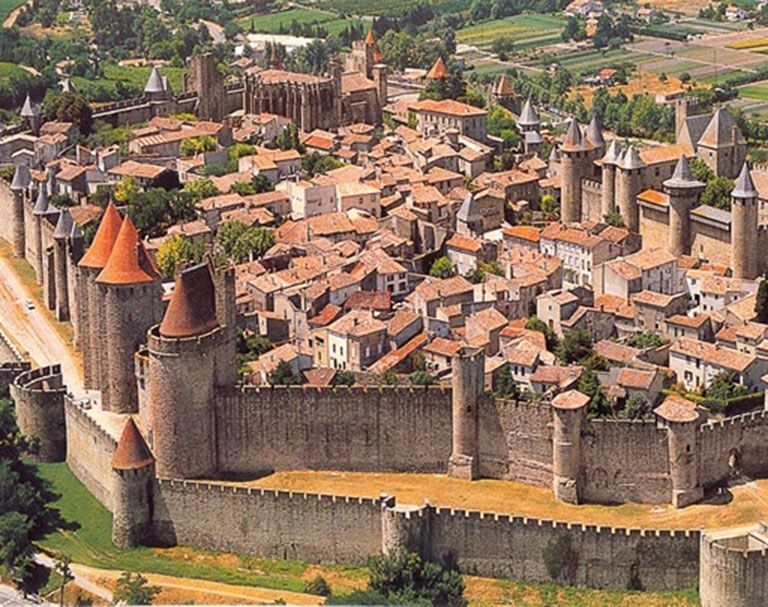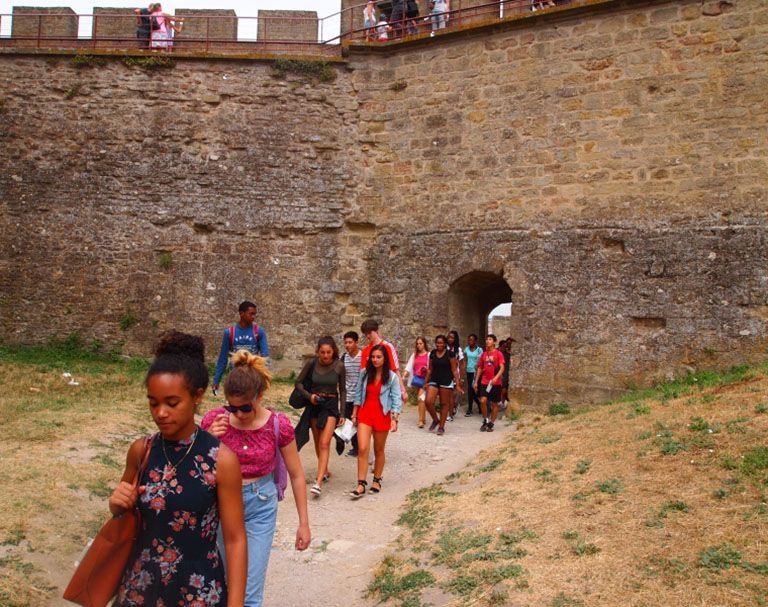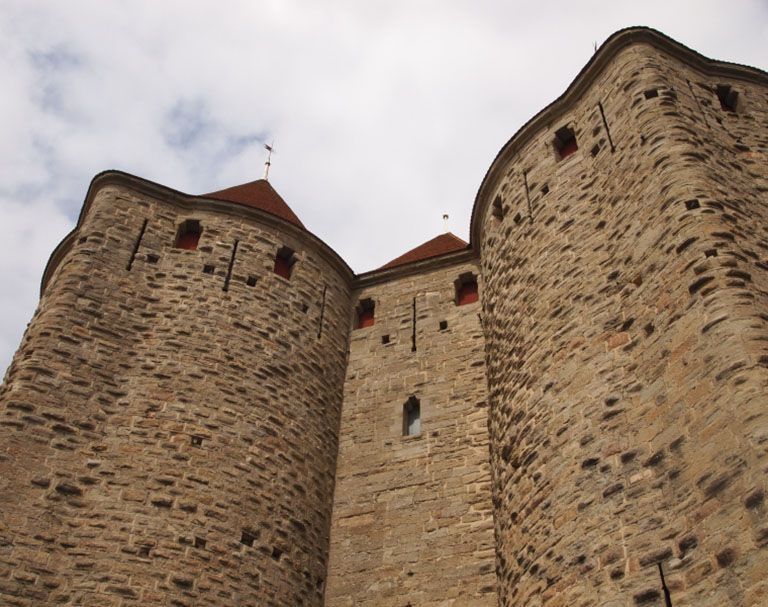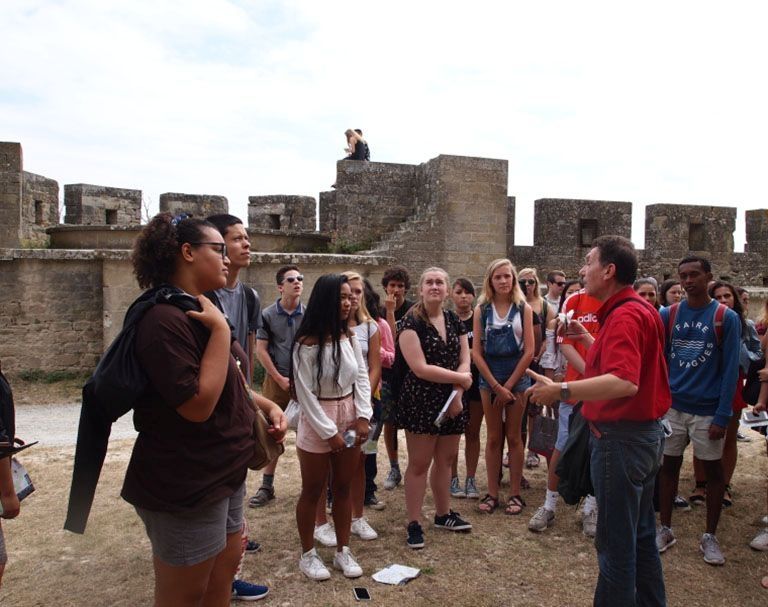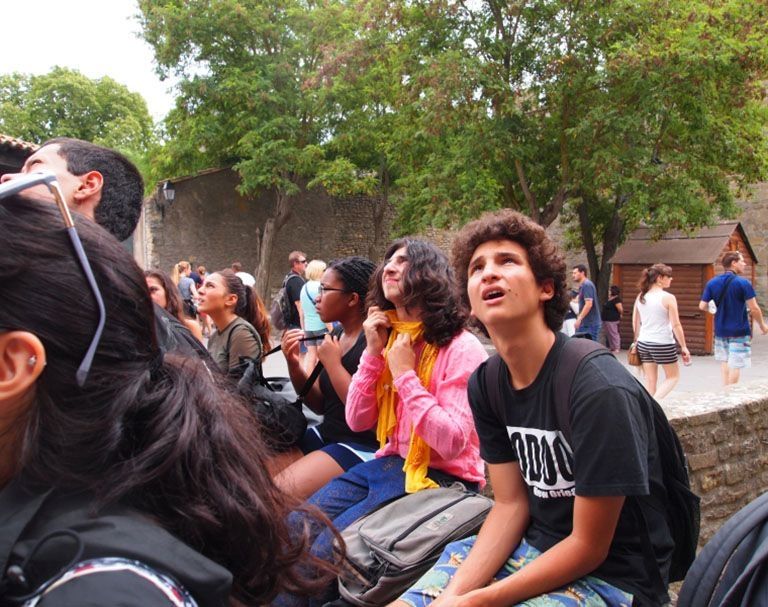C'est Parti! A Carcassonne nous allons!
This weekend, the students and their program leaders...and Eric (it wouldn't be Carcassonne without Eric!) hopped on a magic school bus back to the Moyen Âge! About an hour further south of Toulouse, sits a fortified medieval city atop a hill called Carcassonne. It's the largest city in Europe with all of its walls still intact and sits within the modern city of Carcassonne just below the hill and across the river. Though a small handful of folks live in the historic city center, or the cité médiévale, it mostly functions now as a sort of open-air museum. Carcassonne, in all its archaic magic, is layered with the histories of people and tribes that came and went and left their stories like fossils embedded in stones, clay brick, and stained glass windows.
After finishing their visite guidée with our dear friend Eric, the students had a bit of free time to flâner un peu (one of the many untranslatable French expressions that conveys the experience of wandering aimlessly simply for the joy of soaking up the beauty of a city) and explore the city on their own. When they were done flânering, they met back up with Eric at the Apse of Basilique St-Nazaire, the church inside the city.
The church, as all European churches are, is constructed in the shape of the human body to symbolize the body of Jesus Christ. Like the rest of the city, the church is constructed in both Roman and Gothic style, its arched glass windows characteristic of gothic architecture and the round doors built more in Roman style.
Eric explained to us that the etymology of the word "catholic" comes from "universal". When the Cathares, a religious group that emerged in Europe in the eleventh century, built the church, they purposely added this series of faces at the top above the windows to depict God's people around the world. This was meant to convey that all people were welcome in the church and God's kingdom. Without geography or the awareness of what other people might look like around the world, they used their imaginations to conjure up some examples. Some of these faces are slightly terrifying...some have enormous dumbo-like ears or bulging eyes. One of them even has a nose like the beak of a crow. This was meant to be inviting! The idea was this: if you have dumbo ears or enormous bug eyes--yes, even a crow beak for a nose--you were welcome in the church.
This nifty little hunk of stone, or medieval selfie as Eric called it, is a depiction of a siege on Carcassonne. That long line down the middle represents the ramparts of the city. Those figures to the left of it are soldiers trying to infiltrate the city's walls and everything to the right are the people of Carcassonne. This portion of the scene was found in a river and now rests on a wall near the choir of Basilique St-Nazaire.
Catch ya on the flip side!
Lana
Related Posts
A Visit to the Famous Fortified City of Carcassonne
In the foothills of the Pyrenees lies the medieval walled city of Carcassonne. It was restored in the XIX century and declared a UNESCO World Heritage Site in 1997. Many... keep reading
Eco-consciousness: A Recurring Theme
From the Glânerie to the Domaine du Thoré, participants have had ample opportunities to contemplate their impact on the environment and reinforce their connections with nature in interactive and unforgettable... keep reading
Playing Rugby in the World Champion City of Toulouse
Here in Toulouse, people take rugby seriously, Stade Toulouse is the most successful rugby club and they are the reigning champions for 2024 as winners of the Heineken cup. They... keep reading
